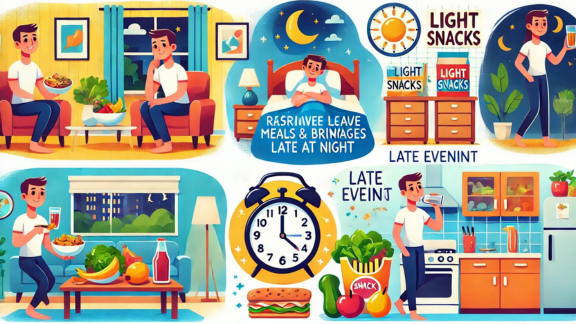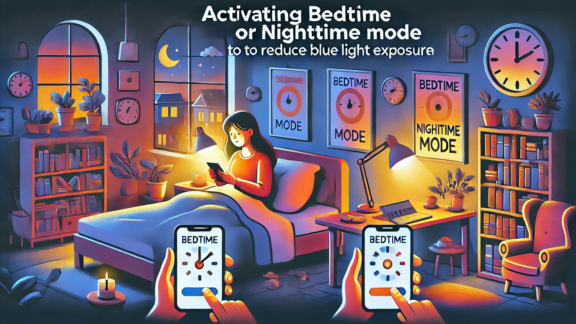
Chapter 4
Sleep
“Man should forget his anger before he lies down to sleep.”
– Mahatma Gandhi



Sleep with a Clear Mind
Spend 15 minutes reflecting and writing down your thoughts and to-dos for tomorrow.
Use a simple prompt:
- What went well?
- What didn’t go well?
- What will I do tomorrow to improve?
This practice helps you leave your burdens on the page and go to sleep with an empty mind.
Keep your journal and pen nearby to note down any thoughts that arise, leaving them for tomorrow.






Knowing When to Get Out of Bed
After 20 minutes, it’s okay to get up if you can’t sleep.
Avoid watching the clock by facing it away and turning off your phone.
Try relaxing activities like reading, listening to music, meditating, deep-breathing techniques, or playing a repetitive game like Sudoku.






Mind Your Eating Habits
Refrain from large meals and beverages late at night to prevent sleep disruptions.
Proper nutrition is essential for overall well-being, so prioritize healthy eating habits.






Utilize Light Block Apps and Functions
Activate the built-in Bedtime or Nighttime Mode on all your devices to reduce blue light exposure.
Try the free app Flux, which offers advanced nighttime settings.






Master the 2-Minute Sleep Technique
Developed by the US military to help pilots fall asleep quickly:
- Relax Facial Muscles: Include your tongue, jaw, and muscles around the eyes.
- Drop Your Shoulders: Relax your shoulders, then your arms one side at a time.
- Exhale and Relax: Breathe out, relaxing your chest, then your legs from thighs to feet.
- Clear Your Mind: Spend 10 seconds clearing your mind, then visualize one of these images:
- Lying in a canoe on a calm lake with a clear blue sky above.
- Lying in a black velvet hammock in a pitch-black room.






Feel free to share with your colleagues
Give feedback, ask questions or request new resources


